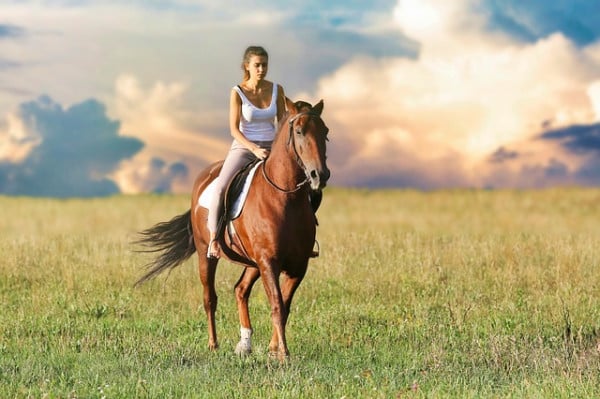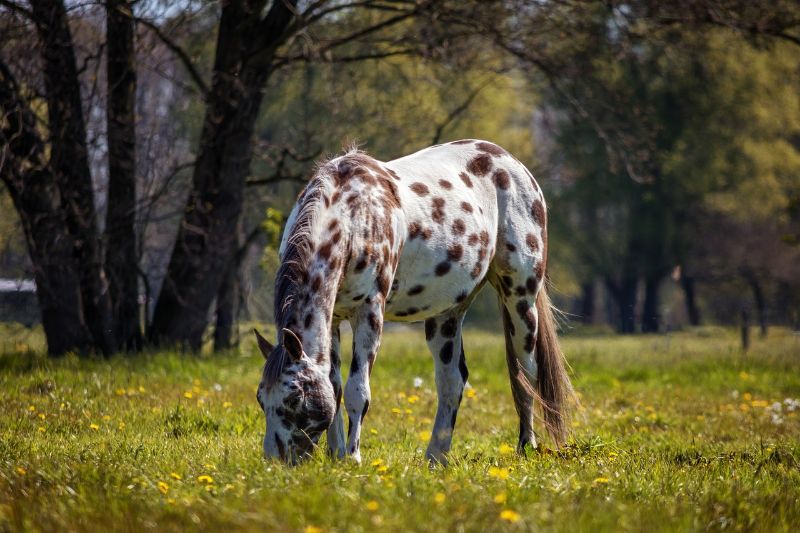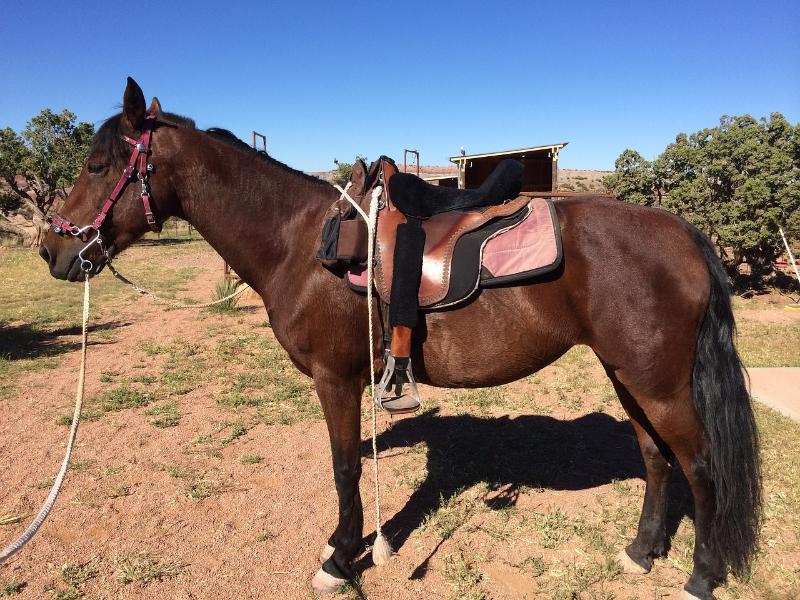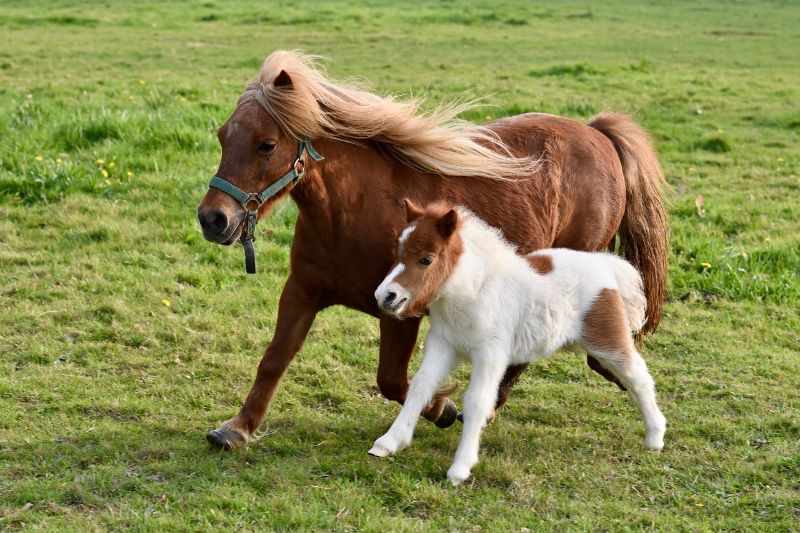What types of horses are there in the world? And what unique traits differentiate them? Get answers to these questions, and more in our detailed horse breeds article.
Despite the existence of over 350 horse breeds and ponies worldwide, a recent study shows that all modern horses are descendants of two main types: the Turkoman horse (now extinct) and the Arabian horse.
Horses have existed for over 160,000 years, with domestication dating back to around 6,000 years ago in Eurasia. For many years, these animals have been used for transport and battle.
However, horses are currently being reared as amusement animals, used for racing competitions, hunting, riding, or just as pets.
Horses can be classified into two main categories: horses and ponies. Horses under 56.8 inches tall are mostly referred to as ponies. But before we get into each of these types, let’s see why “everyone” loves horses.
Why People Love Riding Horses

Horses have a great capacity to learn and remember things. You can train them not to overreact to undangerous things and to only react when necessary.
Horses are great herd animals. To thrive in a herd, they need to read the emotions of other horses and interpret them well. An untrained eye may fail to note any interaction, but you will appreciate that their interactions are different and rich if you are keen enough.
Similarly, horses read and bond with individuals who treat them nicely. They treat these people as their leaders or herd members. The capability to form an emotional bond is one of the major things that appeal to most horse owners and those who work with them.
Horses are some of the most beautiful animals. You ride them because you both respect each other and have a mutual bond. Although they’re big animals, they’re pretty gentle and kind. It’s even therapeutic to be around horses.
List of Different Types of Horses
So, how many horse breeds are there? There are over 350 horse breeds and ponies. Each horse breed has unique qualities, ranging from working and racing to equestrian competition and casual riding.
Many horse lovers will prefer one horse breed over the other for several other reasons, as we will see later. Even so, here are the most popular and common types of horses.
1. Arabian Horses

Arabian horses are the earliest breed of horses known to humans, having the oldest horse breed registry. It is usually considered to be the first horse breed humans domesticated, and it’s more than 5 000 years old. It is also one of the most popular horse breeds in the world!
Though its origin is in the Middle East, this purebred horse is spread across the world. The breed has earned a permanent place for many equestrians because of their undeniable beauty, work ethic, intelligence, and stamina. They shine in a wide range of disciplines.
These horses come in different temperaments, colors, and sizes, just like a bag of marbles.
Most people love the breed because of the following reasons.
- Beauty– comes in many different colors and sizes.
- Trainability– they are sensitive and highly receptive, so they pick up things very fast.
- Community– you can easily find a big community of Arabian horse fans and owners. This means that you can hang out and compete with each other. Plus, you can easily find instructors and trainers familiar with the Arabians.
- Loyalty– if you treat them with respect and kindness, they give you everything they have. They show bravery for their owners.
- Versatility– can compete in various disciplines. You can see them in reining, western pleasure, English pleasure, competitive trail riding, saddle seat, jumping, dressage, and driving. They can also be used for therapy.
Breed Outline
- Height – 14 to 16 hands or 56-64 inches.
- Weight – 800 to 1,000 pounds
Physical Characteristics
You’ll know them by their dished face, beautifully chiseled head, high tail carriage, and long arching neck. Its whole appearance emanates nobility, courage, intelligence, and energy.
Types of Arabian Horses
Within the breed, there are six types of Arabian horses. These include;
- Shagya
- Russian
- Crabbet
- Polish
- Spanish
- Egyptian
Though Arabian horse types have some similar characteristics, each horse has its own unique characteristics and history.
2. Appaloosa Horse

Appaloosa is a spotted horse that has been many people’s favorite for centuries. It’s very popular in America.
Apart from their undeniable beauty, Appaloosa is a loyal, gentle, friendly companion. They are always ready and eager to please and are a great breed for equestrians.
The Nez Perce people reproduced the Appaloosa for battle, hunting, and transport. Today’s Appaloosa is still a multi-talented horse. It’s used for long-distance trail riding, rodeo events, working cattle, English and Western riding sports, etc.
It’s a very gentle and friendly horse, which makes it an enjoyable, friendly, and rewarding companion.
Breed Outline
- Height 14- 15 hands or 56-60 inches tall.
- Weight- 950- 1,200 pounds- (can be more)
Physical Characteristics
You’ll know it by its mottled skin, coat pattern, striped hooves, and white sclera.
The horse should have mottled skin or an identifiable coat pattern to receive systematic registration and any other characteristics mentioned above.
3. American Quarter Horse

American quarter horses are among the few types of horses that capture the hearts of novice and expert equestrians in equal measure. They are agile, docile, and athletic, making them popular horses.
These horses were originally developed in the 1600s from a crossbreed of the Native American Chickasaw and the English thoroughbreds. The American quarter horse is typically the most popular horse breed in the US, with around 3 million living horses.
These horses excel both in trail and show ring events. And it can outrun most other horse breeds, with speeds topping 55 mph.
Breed Profile
- Height – between 56 and 64 inches, although some (like the Halter-type) may reach a height of 68 inches.
- Weight – between 950 and 1,200 pounds.
- Color – comes in almost any color, with the most common one being sorrel.
The current American quarter horse is short and stocky with heavily built muscles.
Physical Characteristics
These horses are beautiful. An American Quarter Horse has a chiseled head, flat profile, and wide forehead. This horse is medium-boned.
4. Thoroughbred Horses

Thoroughbred horses are popular as racehorses but can perform other tasks such as fox hunting, polo, jumping, dressage, and combined training.
Thoroughbreds fall under “hot-blooded” horses, meaning they’re athletic, intelligent, bold, and spirited. Its origin is England, as a crossbreed of native meres with imported Arabian, Turkoman, and Barb stallions.
Thoroughbred horses were first imported to North America in the 1730s and are currently spread throughout the globe.
Breed Outline
- Weight- 1,000- 1,200 pounds
- Height- 15- 17 hands ( 60-68 inches)
Physical Characteristics
These types of horses can be identified by their chiseled head, long neck, deep chest, high withers, long legs, and short backs. And, although they are huge and powerful, they can move with grace and agility.
5. Morgan Horse

Morgan breed horses are popular for their versatility. This breed is used in many Western and English events.
This horse breed, which was initially developed in the US, can be seen in various events such as endurance riding, cutting, Western Pleasure, show jumping, and dressage. By 2005, there were approximately 175,000 Morgan horses globally.
Morgan horse breeds are cooperative and are always eager to please people. They can adapt to any situation and are fairly easy to keep. Horse lovers, both experts and novices, can comfortably handle the horse.
Morgan horses are among the earliest breeds of horses in the US, and they were pretty useful back in the 19th century. Their unique features saw people use them as coach horses, riding horses, or even cavalry horses in the US civil war.
Breed Outline
- Height- 14- 15 hands ( 56-60 inches)
- Weight- 900- 1,150 pounds.
Physical Characteristics
Well-arched neck, expressive head, small, muscular, strong legs, prominent eyes, and laid-back shoulders.
6. Ponies

A pony is a beautiful horse, popular for its stature. They’re less intimidating, making them a top choice for novice horse riders. They come in several different breeds and were initially developed as landrace to withstand harsh environmental conditions.
Compared to other horse breeds, they have wider barrels, shorter legs, shorter heads, and thicker necks. Some pony breeds, such as the Hackney pony, are used for driving only, while others, such as Connemara and Australian pony, are only used for riding. Welsh pony is used for both driving and riding.
Ponies are friendly and intelligent but can also be cunning or stubborn. They are ideal for children who want to learn how to ride a horse. Adults can also ride bigger ponies because they are pretty strong, even with their small size.
People unfamiliar with horses might confuse a pony with a young horse due to its small size.
Breed Profile
- Height- less than 14. 2 hands (147cm, 58 inches) at the withers.
- Weight- 225 to 360kgs
Physical Characteristics
You’ll know it’s a pony because it’s much smaller than a regular horse. They have unique identifiable features, including a stocky body, well-sprung ribs, and dense bone structure. In addition, their short head, small ears, and large eyes make them easy to identify.
Ponies also exhibit strong hooves, as well as a denser hair coat in comparison with other types of horses.
See related: African Wild Dog.
7. Draft Horses

Draft horses were popular many years ago for doing heavy work, such as pulling heavy loads. They were instrumental in battles as armies used them to carry heavily armored soldiers.
They were also used on farms because of their impressive strength and size. Though tractors replaced them on the farm, you can still see people riding them, pulling a cart, or still helping on the farm.
Draft horses have manes and thick coats to withstand cold weather. They are the largest and tallest horses and are not easily frightened.
Breed Profile
- Height- 16 – 19 hands or ( 64- 76 inches; 163-193 cm) high.
- Weight- 1,400- 2000lbs or ( 640- 910kgs)
Types of Draft Horses
- American Cream Draft
- Ardennes
- Dole
- Bretonnoriker
- Latvian
- Dutch draft
- Percheron
- Italian heavy draft
- Friesian
- Haflinger
- North Swedish horse
- Murakoz
- Belgian ( Brabant)
8. Warmbloods

In the horse world, the term “cold-blooded,” “warm-blooded,” and “hot-blooded” are used to classify a horse’s origin, size, and temperament.
Warm-blooded horses are famous in Olympic sports like dressage. Many European horse breeders breed warmbloods for competition.
Warmblood horses are a cross between a “cold” and a “hot” blooded horse—the origin of warmbloods is in Europe.
Carriage horses (war horses) were bred with Thoroughbreds and Arabians. The emerging “Warmblood” horses were bigger than the “hot-bloods” but more refined than “cold-bloods.”
Breed Profile
- Height- 15- 17 hands ( 60-68 inches)
- Weight- Average 1,4 30 pounds
Warm-blood horses have the temperament of cold-blood horses and hot blood horses. This means that they’re calm and patient, just like their cold-blooded counterparts, and have the athleticism of hot- breeds horses.
That’s why they shine in sports that need strength, speed, and discipline, such as show jumping, dressage, and eventing.
See Related: Animals That Start With V
9. Tennessee Walker

Tennessee Walker is best known for its even temperament and peculiar running walk. The horse was first bred in the 18th century in the Southern USA and is still popular today due to its smooth gait and uneven disposition.
Tennessee walkers were bred to help offer a relatively comfortable way to cover long distances on horseback throughout the day. Course plantation managers, circuit preachers, and country doctors appreciated their all-day endurance and smooth gait.
Their special signature gait and the running walk enable them to move faster, with no jolting, as there’s always one foot touching the ground every time.
Today’s Tennessee Walking horse is elegant, refined, and solidly built. It’s a very tall horse with a long neck and tiny, beautifully placed ears.
Breed Profile
- Height- 14.3 – 17 hands ( 59- 68 inches) or 150- 173 cm
- Weight- 900- 1,200 pounds or 410- 540 kgs
10. Andalusian Horse

Andalusian horses have a superb temperament. They are smart, brave, sensitive, docile, and kind. Their desire to learn and implement new things is unmatched. This horse breed easily adapts to changes and new environments without much stress.
Since these horse types are obedient, responsive, and cooperative, they are easy to train and learn quickly. Nonetheless, many equestrians recommend handling these breeds only if you have considerable experience working with other horses. This is because they are pretty fast, agile, and heavily built.
Originally, Andalusian horses were used for driving, bullfighting, classical dressage, and stock horses. Today’s Andulasians are used for driving, showjumping, and dressage. You can also see them in movies, particularly fantasy epics and historical pictures.
Breed Profile
- Height – 15.2 hands ( 156cm, 61. 5 inches) to 154 cm, 5 inches at withers
- Weight- 1,129lbs, 512kgs to 412kgs ( 908lbs)
Andalusian stallions and geldings average 15.1 1⁄2 hands (61.5 inches, 156 cm) at the withers and 512 kilograms (1,129lbs) in weight. Mares average 15 1⁄2 hands (60.5 inches, 154 cm) and 412 kilograms (908lbs)
See related: Great Hammerhead Shark.
11. Paint Horses

Paint horses are versatile, and you can see them in almost every equine sport. You will see them jumping, barrel racing, combined driving, working cattle, cross-country events, etc.
Paint horses come in various colors and markings, although there are only three main patterns: the tobiano, tovero, and overo patterns.
Paint horses are colorful and strong, and their bodies are well-balanced. They are ideal for riders of any experience level and shine in multiple equestrian sports or as working horses.
Breed Profile
- Height – 14-16 hands (56-64 inches)
- Weight – 950 -1,200 pounds
The horse’s colored patterns are one of its most distinct features, although it offers more than beauty. Combined with its muscular body and well-balanced stature, these traits make this horse breed one of the most popular horses in equestrian sports.
While we may be unable to explore all types of horses, we have covered some of the most common ones. Through this article, you now know about the different kinds of horses that exist in the world, as well as their unique traits.
FAQs
What is the most common type of horse?
The most common type of horse is the domestic horse, also known as Equus ferus caballus. Domestic horses are widely used for various purposes, including riding, racing, and working. They come in a variety of breeds, each with their own unique characteristics and physical attributes.
What are the three types of horses?
There are three main types of horses: draft horses, light horses, and ponies. Draft horses are large and muscular, used primarily for heavy work such as plowing and hauling. Light horses are smaller and more agile for riding, racing, and other athletic pursuits. Ponies are smaller than light horses and are often used for children’s riding or pulling small carts.
What are the two main types of horses?
There are two main types of horses: domesticated horses and wild horses. Domesticated horses are selectively bred for specific traits and are used for a variety of purposes, such as transportation, sports, and work. Wild horses, on the other hand, are not domesticated and live in the wild, often in herds.
What kind of horse to ride?
Is there a specific type of horse to ride? Generally, the best horse type depends on the rider’s experience level and the activity they plan to do. A calm and well-trained horse is recommended for beginners, while experienced riders may prefer a more spirited horse for activities like jumping or racing. It is important to choose a horse that matches the rider’s skill level and the activity they plan to do to ensure a safe and enjoyable ride.
Other Species Profile
Related Resources
